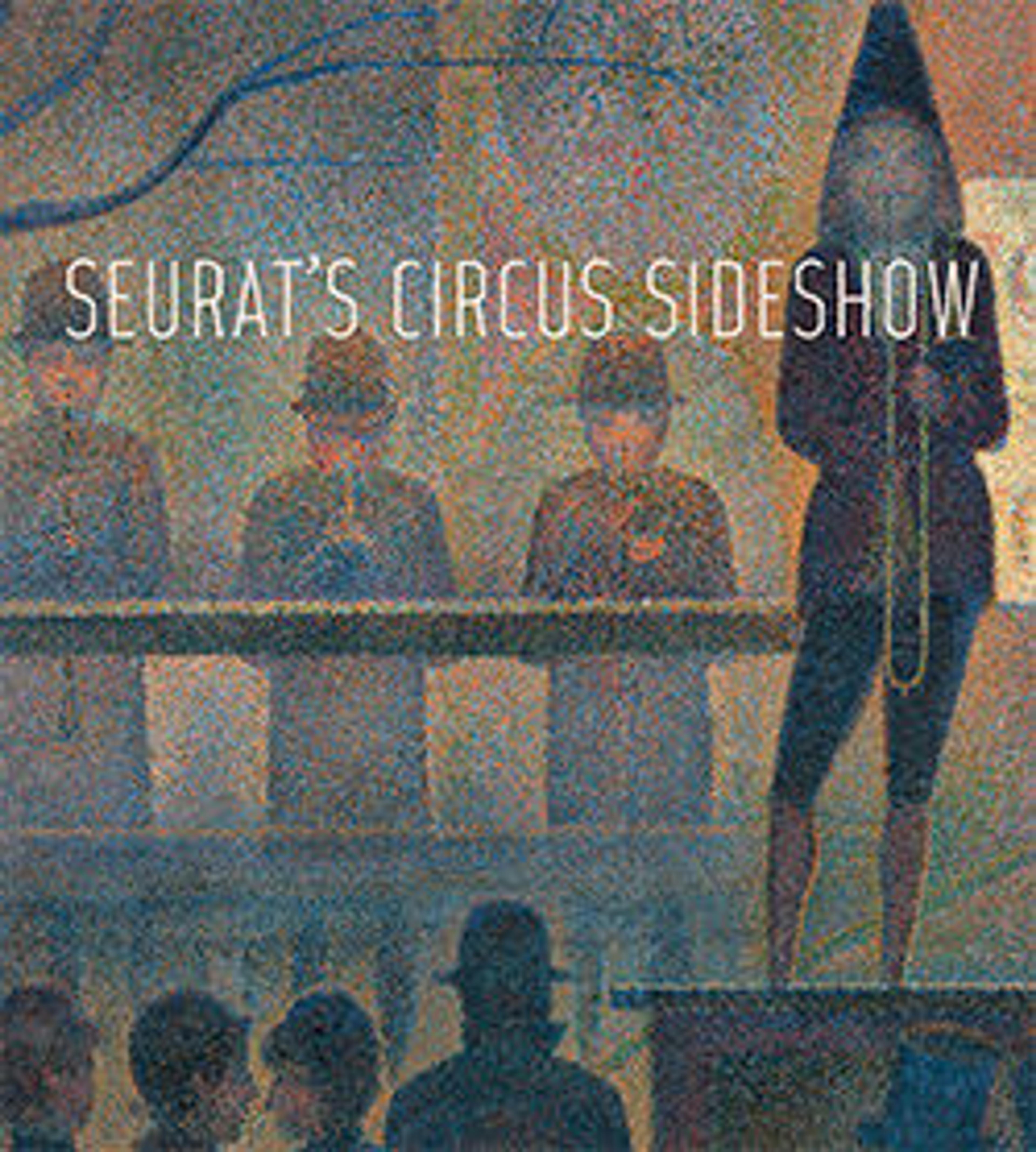Fireworks at Ikenohata
On a summer evening, along Shinobazu Pond in the Ikenohata district in northeastern Tokyo, crowds of people—visible only in dark silhouette—watch fireworks explode in the distance. The spectators stand beneath a string of brightly lit lanterns, while a couple of children have climbed a tree to get a better view. The outlines of Benten Shrine, in the middle of Shinobazu Pond, can be seen on the right horizon while the lighted windows and lanterns illuminated on the far shore cast their shimmering reflections on the water. The print artist Kobayashi Kiyochika became famous for these “light ray pictures” (kōsenga) that explored the play of light against darkness. Often depicting scenes illuminated by gas lamps that were becoming so prevalent in the city, Kiyochika discovered the profound world of darkness and shadows that recalled the Edo of his childhood.
Between 1876 and 1881, during an age of rapid modernization, Kiyochika created a series of prints capturing scenes of famous locales in Tokyo. Usually print artists of this time, including Kiyochika as well, focused on the aspects of the city that were changing, and created colorful and complex compositions exalting Western style architecture and technology, Japanese aristocrats in European outfits, or scenes of Japan soldiers in battles in Russia or China. Kiyochika in this set of prints, however, seemed intent on holding onto something that was being lost in modern Japan. For instance, ukiyo-e artists of the Edo period (1618–1868) often depicted firework celebrations, and it became associated with views of the old city, and this print recalls such earlier examples.
Kiyochika achieved renown for the way that he captured the effects of light and dark in his nocturnal cityscapes. He often depicted scenes illuminated by gas lamps that were becoming so prevalent in the city, while here the lighting effects are created by lanterns illuminated by candles, and the fireworks exploding in the night sky. His prints have been called “light ray pictures” (kōsenga) because of this preoccupation with the play of light against darkness. The scholar Maeda Ai observed, “it may seem a paradoxical way to put it, but what Kiyochika discovered anew under the influence of the brightness of gaslight was precisely the profound darkness and deep shadows of Edo space that enveloped the domain of ‘civilization’.” (“The Light and Darkness of Kiyochika,” in Literature in Urban Space, Chikuma Shobō, 1982) By focusing on the new technology of light, the artist discovered a world of shadows that recalled for him the Edo of his childhood.
Between 1876 and 1881, during an age of rapid modernization, Kiyochika created a series of prints capturing scenes of famous locales in Tokyo. Usually print artists of this time, including Kiyochika as well, focused on the aspects of the city that were changing, and created colorful and complex compositions exalting Western style architecture and technology, Japanese aristocrats in European outfits, or scenes of Japan soldiers in battles in Russia or China. Kiyochika in this set of prints, however, seemed intent on holding onto something that was being lost in modern Japan. For instance, ukiyo-e artists of the Edo period (1618–1868) often depicted firework celebrations, and it became associated with views of the old city, and this print recalls such earlier examples.
Kiyochika achieved renown for the way that he captured the effects of light and dark in his nocturnal cityscapes. He often depicted scenes illuminated by gas lamps that were becoming so prevalent in the city, while here the lighting effects are created by lanterns illuminated by candles, and the fireworks exploding in the night sky. His prints have been called “light ray pictures” (kōsenga) because of this preoccupation with the play of light against darkness. The scholar Maeda Ai observed, “it may seem a paradoxical way to put it, but what Kiyochika discovered anew under the influence of the brightness of gaslight was precisely the profound darkness and deep shadows of Edo space that enveloped the domain of ‘civilization’.” (“The Light and Darkness of Kiyochika,” in Literature in Urban Space, Chikuma Shobō, 1982) By focusing on the new technology of light, the artist discovered a world of shadows that recalled for him the Edo of his childhood.
Artwork Details
- 「池の端花火」
- Title: Fireworks at Ikenohata
- Artist: Kobayashi Kiyochika (Japanese, 1847–1915)
- Period: Meiji period (1868–1912)
- Date: 1881 (Meiji 14)
- Culture: Japan
- Medium: Woodblock print; ink and color on paper
- Dimensions: Image: 8 × 12 3/8 in. (20.3 × 31.4 cm)
Sheet: 9 1/4 × 13 1/2 in. (23.5 × 34.3 cm) - Classification: Prints
- Credit Line: Gift of Sebastian and Miki Izzard, 2016
- Object Number: 2016.577
- Curatorial Department: Asian Art
More Artwork
Research Resources
The Met provides unparalleled resources for research and welcomes an international community of students and scholars. The Met's Open Access API is where creators and researchers can connect to the The Met collection. Open Access data and public domain images are available for unrestricted commercial and noncommercial use without permission or fee.
To request images under copyright and other restrictions, please use this Image Request form.
Feedback
We continue to research and examine historical and cultural context for objects in The Met collection. If you have comments or questions about this object record, please contact us using the form below. The Museum looks forward to receiving your comments.
